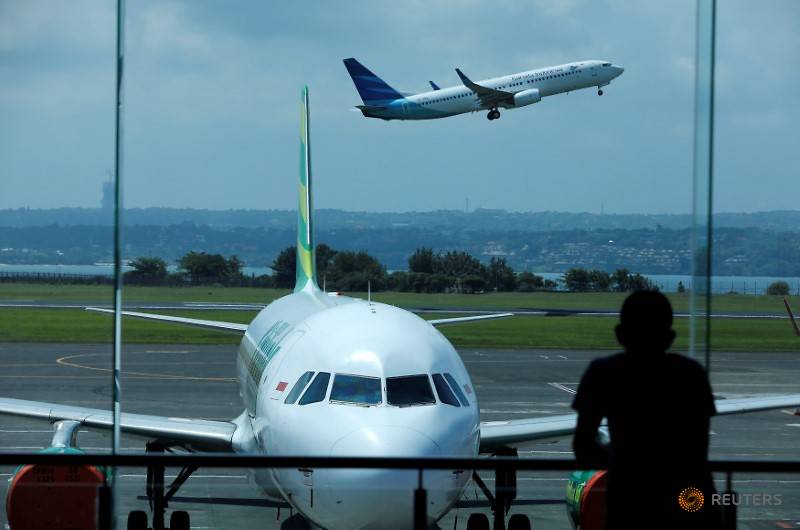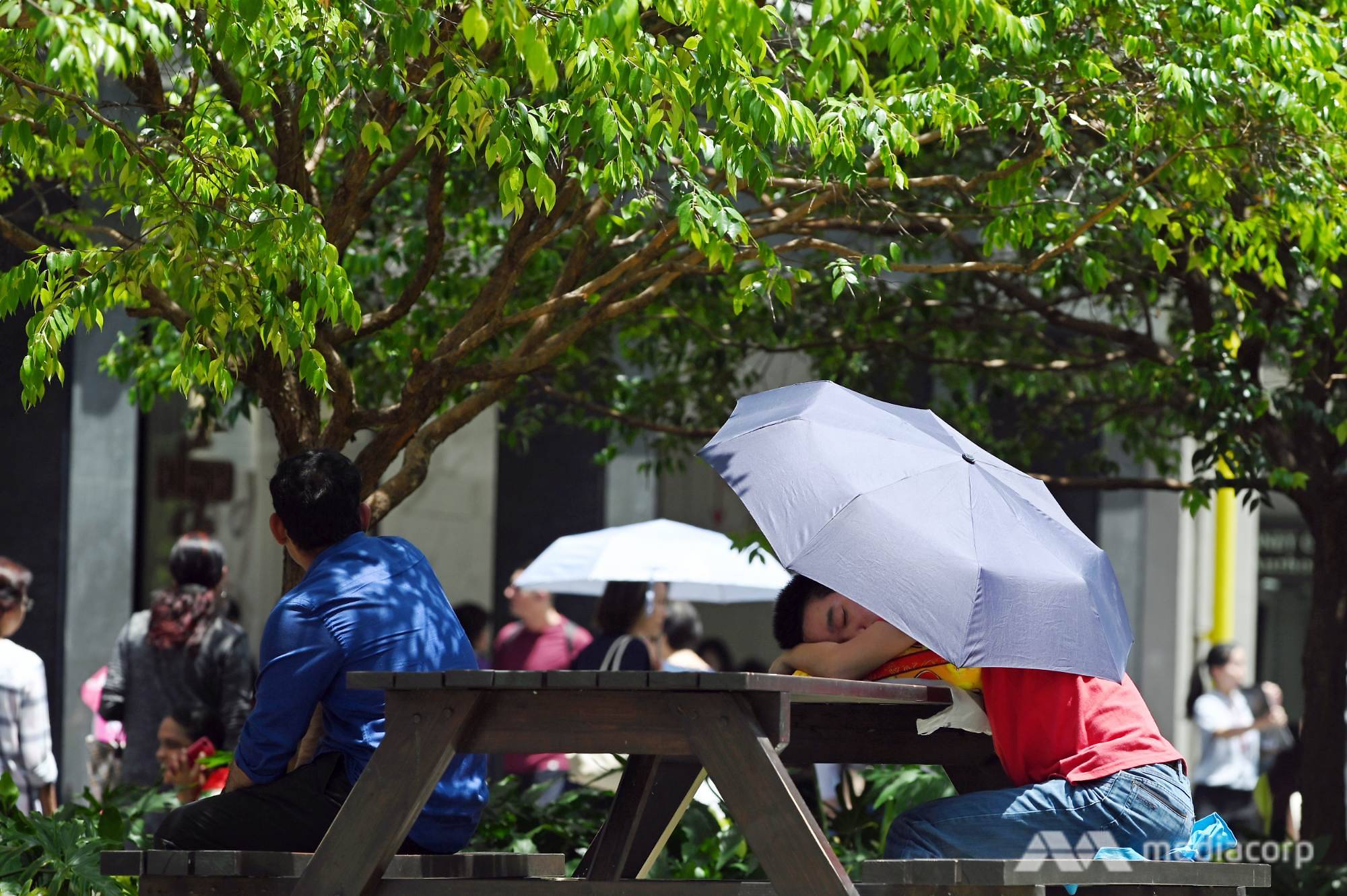SINGAPORE: In the battle against climate change, environment experts have urged individuals to look beyond single-use plastic and make bigger changes in their daily lives: Drive and fly less, and change what they eat and buy.
“Most of the individual actions people can do are often less visible than not using straws, and requires an effort to change behaviour for the long term,” Associate Professor Winston Chow of the Singapore Management University (SMU) told CNA on Wednesday (Aug 7).
“Some steps would be to reduce consumption of goods, materials and services that generate carbon emissions.”
A Mediacorp survey released on Wednesday showed that more than nine in 10 Singaporeans and permanent residents agreed that they would do their part to “minimise the impact” of climate change.
READ: Nations agree landmark UN climate report after marathon talks
But what exactly should they do?
“Straws are a small part of our overall footprint,” said Singapore University of Technology and Design’s (SUTD) Assistant Professor Lynette Cheah, whose research interests include life-cycle energy and environmental assessment.
“Most of an individual’s carbon footprint arises from energy consumed, at home or for transportation, or to make the stuff that you buy, or food that you eat.”
More effective measures include reducing energy and material use as well as consumption in general, she said, noting that it is more challenging to make behavioural changes given how consumer culture is marketed.
“The most impactful actions are avoiding long flights, avoiding car or taxi travel, and carpooling. Opting for a vegetarian diet or avoiding beef also helps,” she added.
DRIVING AND FLYING LESS
A 2017 study ranking the effectiveness of 148 individual actions against climate change found that going car-free was the second most effective action behind not having kids.
The study said going car-free can save 2.4 tonnes of greenhouse gas emissions a year, showing “much greater potential … than commonly promoted strategies like comprehensive recycling or changing household lightbulbs”.
In Singapore, private cars contribute more than a third of emissions by the transport sector, behind commercial vehicles, taxis, buses, the MRT/LRT and motorcycles, according to the National Climate Change Secretariat.
READ: Half-a-degree warmer means 30,000 more deaths yearly in urban China: Study
Cars, motorcycles and general traffic in Singapore’s central business district (CBD). (File photo: Marcus Mark Ramos)
When it comes to flying, the same climate change study found that an average transatlantic round-trip flight can release around 1.6 tonnes of greenhouse gas, almost as much as the average yearly emissions of one person in India. A person in Singapore contributes about 10.3 tonnes on average every year.
“A major step would be to acknowledge personal activities that emit a lot of carbon, for example, overseas travel for business or tourism by aviation,” said SMU’s Assoc Prof Chow, whose research interests include urban vulnerability and climate change.
“One thing that can be done is to purchase carbon offsets from reputable agencies to reduce one’s impact from air travel.”

A passenger waiting for his flight to depart watches a plane take off from the domestic terminal at Ngurah Rai International Airport in Bali. (File photo: Reuters/Darren Whiteside)
The environmental cost of air transport should also be considered when going shopping, Plastic-Lite Singapore founder Aarti Giri told CNA.
“Buy produce or items that are imported from neighbouring countries, as these would have a lower carbon footprint over those imported from far-away countries,” she said.
CHANGING WHAT YOU EAT AND BUY
Beyond that, Ms Giri said individuals should reduce their consumption by moving away from “instant gratifications and start shopping according to their needs and not wants or impulses”.
“Reducing consumption, in my opinion, is one of the most important traits every person has to develop if we are to have a fighting chance to lower global carbon emissions,” she stated.

People shop at an H&M store in New York City, New York. (File photo: Reuters/Brendan McDermid)
For example, the clothing sector represents around 3 per cent of the world’s global production emissions of carbon dioxide, mostly because of the energy used to produce attire.
A 2017 YouGov study also found that a third of people in Singapore have thrown away clothing after wearing it just once. In 2018, Singapore generated 219,800 tonnes of textile or leather waste, of which only 6 per cent was recycled.
“Having a more minimalist and timeless fashion sense would go a long way to caring for our environment and mitigate climate change,” Ms Jen Teo, executive director of the Singapore Environment Council (SEC), told CNA.
“In more affluent medium or high-income societies like Singapore … we buy more than what we need and also discard things when they are still in good condition because they are no longer trendy or we no longer like them.”
Ms Giri said other ways of reducing consumption include maximising the life of gadgets and appliances, as well as opting for second-hand goods like clothes or furniture.
READ: World leaders must prove they’ve listened to climate activists: Thunberg

Cattle stand in an enclosure at the Adventure Farm during preparations for the Green Week international food, agriculture and horticulture fair in Berlin. (File photo: Reuters/Thomas Peter)
As for consuming food, the food industry – in particular, the meat and dairy sector – is one of the largest contributors to climate change, after fossil fuels. In fact, if cattle formed a country, they would be the world’s third-largest emitter of greenhouse gases, behind China and the US.
Ms Giri said individuals could adopt a low-carbon diet by incorporating plant-based foods as much as possible. “Raising beef requires 20 times more resources than plant-based proteins and 10 times more than chicken,” SUTD’s Asst Prof Cheah said.
File photo of food waste products. (Photo: AFP/Jean-Christophe Verhaegen)
Nevertheless, food waste as a whole remains a problem in Singapore, with the Government singling it out in its first Zero Waste Masterplan as one of three major waste streams. In 2018, Singapore produced 763,100 tonnes of food waste, of which 17 per cent was recycled.
A recent SEC survey on food waste in Singapore showed that less than a quarter of its 1,002 respondents could be classified as “smart consumers”.
Among other things, this refers to those who consume all food items bought, do not throw away unconsumed food, and are not swayed by promotional offers to buy excess food items that are potentially wasted.
“The other 80 per cent throw away 10 per cent or more of uncooked and unconsumed food items per week,” Ms Teo said. “What we need is to have more people make conscious efforts at being a smart and efficient shopper.”
HOW URGENTLY SHOULD YOU ACT?
These measures would go a long way in fighting climate change, with a 2018 United Nations report saying current actions are not enough to keep the Earth’s temperature rise to 1.5 degrees Celsius above pre-industrial levels.
Meeting this target, rather than the 2 degrees Celsius target agreed at global climate talks in Paris in 2015, would have “clear benefits to people and natural ecosystems,” the United Nations Intergovernmental Panel on Climate Change had said.
But Environment and Water Resources Minister Masagos Zulkifli warned on Jul 17 that “time is running out”, pointing out that this increase could occur as early as 2030.

Napping under the sun during a spell of hot weather in Singapore. (File photo: Marcus Mark Ramos)
Asst Prof Cheah said it is good to consider what you can do to tackle climate change “at an individual level first, because that is where climate action starts”.
However, she pointed out that “saying is different from doing”, noting that there remain many challenges to climate action.
“Barriers include not knowing what an adequate response may be, or going against social norms that do not encourage climate-friendly behaviours,” she explained. “Ideally, the expressed motivation is translated into real and effective climate action at different levels.”
Asst Prof Cheah added that actions can be scaled to households through buying used items, schools through monitoring electricity use, and companies through opting for virtual meetings.
READ: Singapore to declare 2018 Year of Climate Action
READ: Budget 2018: Large emitters to be charged S$5 per tonne of greenhouse gas emissions under carbon tax
“There are global and local perspectives to (climate action), and it is paramount to understand the Singapore context in order to make informed decisions and take salient action,” Zero Waste SG manager Pek Hailin told CNA.
“Being open-minded to other options, such as simply buying less to avoid spending too much time decluttering, is great too.”




